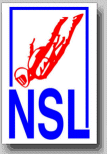
National
Skydiving
League
226 Pecan Street
Deland FL 32724
tel: (386) 801-0804
© 2003 - 2024
All Rights Reserved


226 Pecan Street
Deland FL 32724
tel: (386) 801-0804
© 2003 - 2024
All Rights Reserved


Carolina Turbo XP had a good battle with Fallout in the Advanced Class and won by six points after ten rounds. It is the first time that the same team with the same lineup won the Intermediate Class, stepped up into the Advanced Class next year and won again. Congratulations to the young team from Skydive Carolina.
The Air Force teams Impulse and Eminence had also stepped up from the A Class dive pool at USPA's Collegiate Championship 2009 to the AA Class dive pool in the Intermediate Class. Only Spaceland Mamba was able to keep up with both teams but ended up in second place. Impulse won as clearly as VTSD/Carolina Turbo XP in 2009.

The videos once again include CamScore's slow motion service at the end of the official judging. CamScore's Jo Bell had this brillant idea, and her partner Andrew Mansfield wrote the code to make it happen.
This special service allows the judges and the teams and competitors to evaluate the judging calls after the actual judging has been completed. It takes away any potential doubts of a correct call and shows the actual infringement more clearly. The teams have the opportunity to learn what the judges are looking at, and the judges can take a closer look at their own calls, as well.

The audience can decide whether there was a clearly presented break between those two formations or not. The call cannot be the break of the Piver to start Block 20 since this would be indicated as an "incomplete formation". Perris Fury had a similar situation in the same round building the center of the Piver. Airspeed's exit in Round 6 is another learning example.
Airspeed and Fury had very dfferent ways how to engineer the sequences. Airspeed seems to have a broader variety of engineering options and finds more often the most efficient way for the sequences. This was one of the Airspeed advantages in the fast sequences of Rounds 5 and 6.